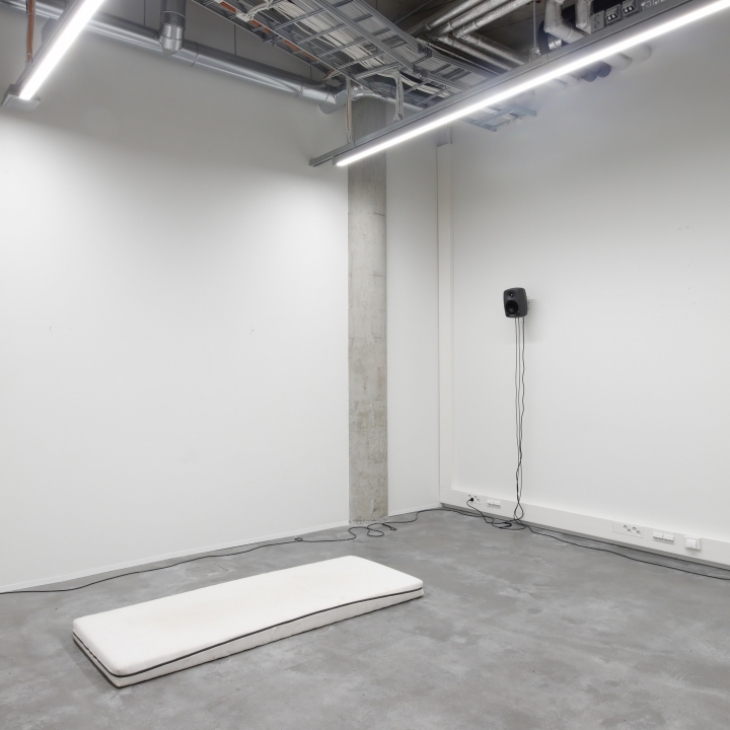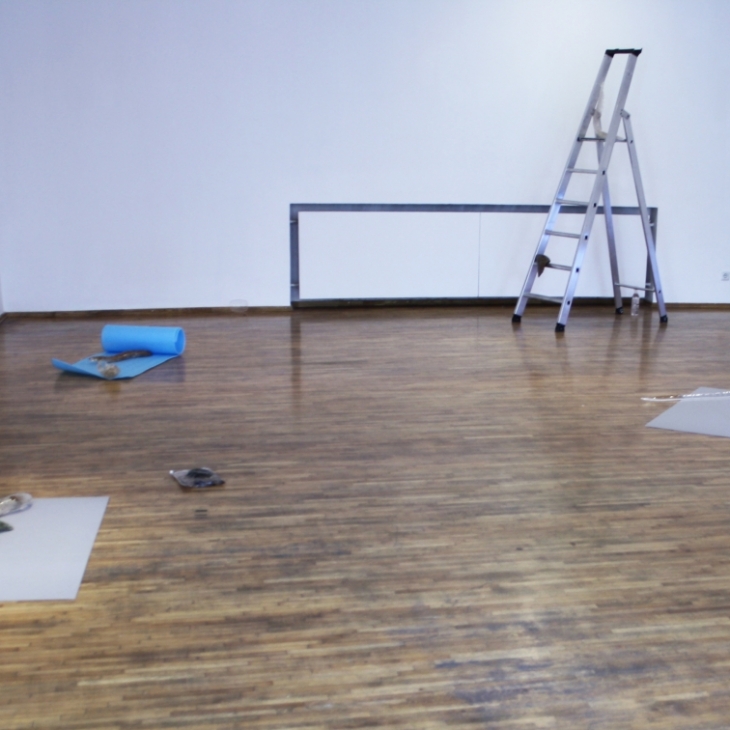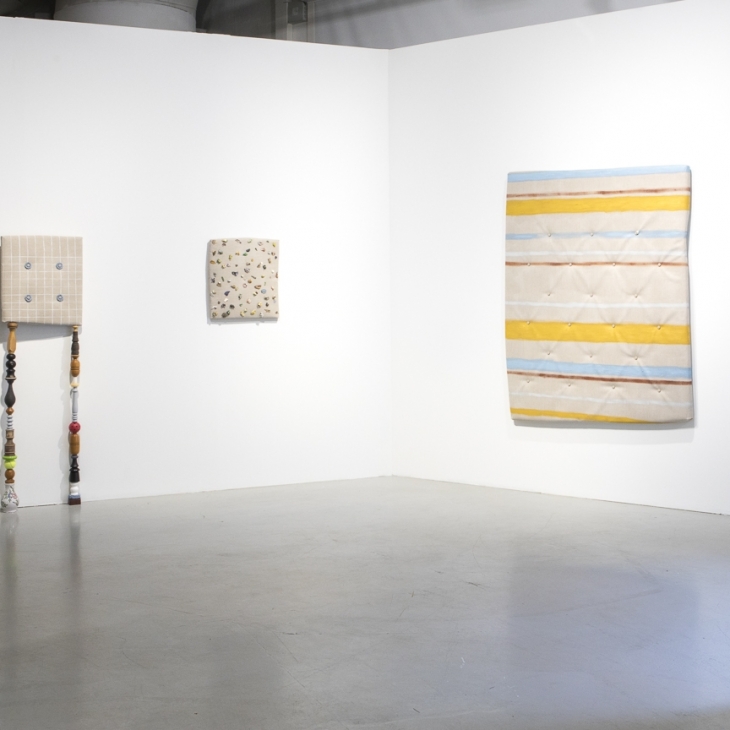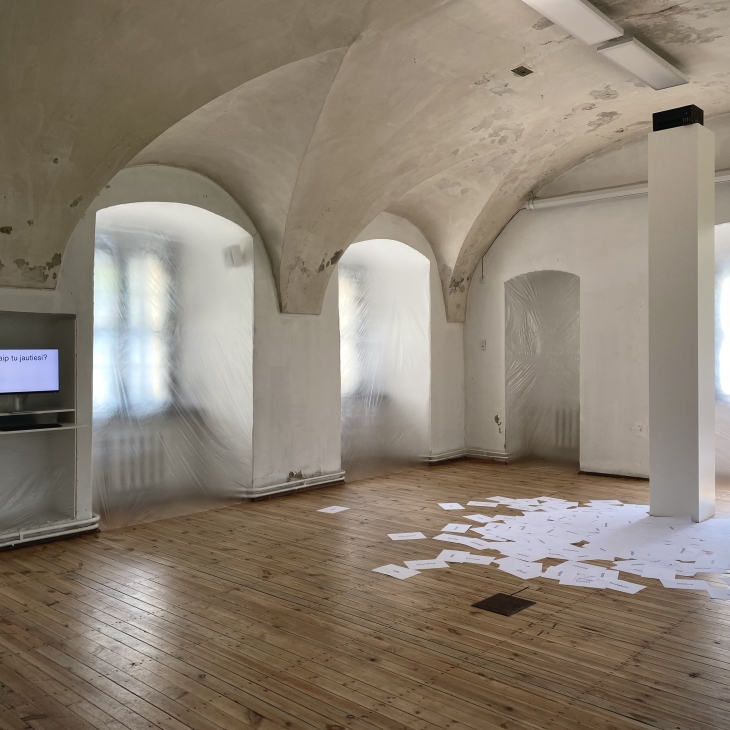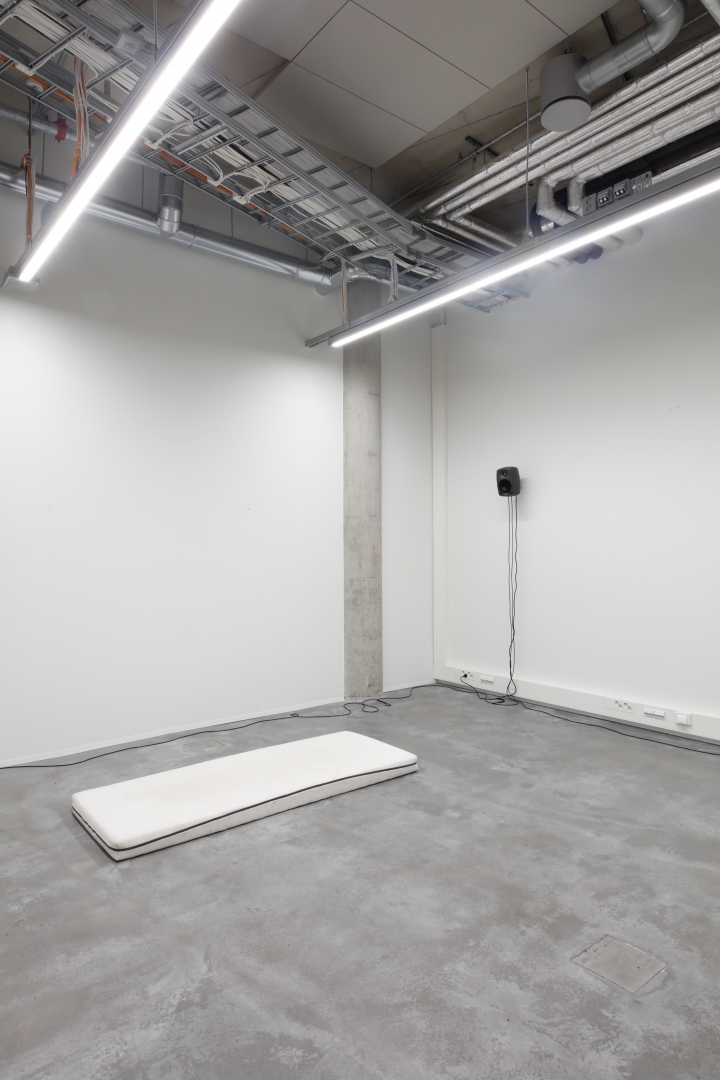Ville Laurinkoski 7.5. – 5.6.2022, 2022
Interior, sound 14 minutes.
Interior and sound, duration 14 minutes. Voice and piano: Ville Laurinkoski. The work was exhibited as part of Kuvan Kevät 2022 in Kuva/Tila at Academy of Fine Arts, University of Arts Helsinki.
The unnamed work, Ville Laurinkoski 7.5. – 5.6.2022, is an interior with a 14-minute soundtrack. The installation comprises of the walls, the ceiling and the floor, a one-person mattress, the dirt on it, the light strips and the infrastructure of the building, the holes and a few nails on the white walls, of a bin next to the door, of the XLR cords and power outlets, a media player playing a file amplified through four loudspeakers mounted on the walls, of a voice and the sound of a piano reverberating in the windowless chamber.
The sound track consists of four parts. It begins with an order first heard in Swedish and then in English. As an answer, the order is followed by the beginning of the first movement of Beethoven’s Moonlight Sonata, interrupted abruptly and preceding to a voice reading a list of names ordered alphabetically, starting from A and ending to W. After this comes the third movement, a poem, read by a voice – once interrupted by a scream, coloured with changing intonations and rhythms, emphases, pauses, and whispers – that fades slowly into a silence; a long diminuendo to a muteness: the fourth movement; the appearance of an opaque silence produced by the piece that keeps resonating in audience’s bodies. The voice is shapeshifting from being an object in the room to being the room itself, the interior.
Susan Sontag states that “Every era has to reinvent the project of “spirituality” for itself.”[1] Forty years later, Paul B. Preciado proposes that: “Perhaps the best name for “this” spirituality today is “atmosphere,” “breathable matter,” “voice,” and even “body,”” and adds “It’s about the infrastructure of subjectivity.”[2] The work is exactly concerned about this; the atmosphere and breathable matter that reverberates and resonates in the space, the voice that is absorbed in spectators’ bodies. It is a poetics of the infrastructure; a door opening on the unknown, monstrous and inhuman – haunted by power.
[1] Susan Sontag, “The Aesthetics of Silence” (Aspen no. 5 + 6, item 3). [2] Paul B. Preciado, Jeanine Herman, trans., “After Beauty”, in Anne Imhof, ed., Palais #31 – Natures Mortes (Paris: Palais de Tokyo SAS, 2021) 123.

